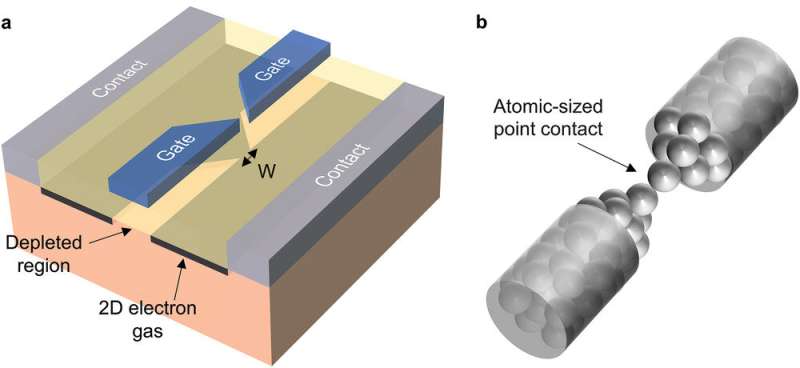Quantum effects in memristive devices

At the nanoscale, the laws of classical physics suddenly become inadequate to explain the behavior of matter. It is precisely at this juncture that quantum theory comes into play, effectively describing the physical phenomena characteristic of the atomic and subatomic world. Thanks to the different behavior of matter on these length and energy scales, it is possible to develop new materials, devices and technologies based on quantum effects, which could yield a real quantum revolution that promises to innovate areas such as cryptography, telecommunications and computation.
The physics of very small objects, already at the basis of many technologies that we use today, is intrinsically linked to the world of nanotechnologies, the branch of applied science dealing with the control of matter at the nanometer scale (a nanometer is one billionth of a meter). This control of matter at the nanoscale is at the basis of the development of new electronic devices.
Among these, memristors are considered promising devices for the realization of new computational architectures emulating functions of our brain, allowing the creation of increasingly efficient computation systems suitable for the development of the entire artificial intelligence sector, as recently shown by Istituto Nazionale di Ricerca Metrologica (INRiM) researchers in collaboration with several international universities and research institutes.
In this context, the EMPIR MEMQuD project, coordinated by INRiM, aims to study the quantum effects in such devices, in which the electronic conduction properties can be manipulated to allow the observation of quantized conductivity phenomena at room temperature. In addition to analyzing the fundamentals and recent developments, the review work “Quantum Conductance in Memristive Devices: Fundamentals, Developments, and Applications” recently published in the journal Advanced Materials, analyzes how these effects can be used for a wide range of applications, from metrology to the development of next-generation memories and artificial intelligence.
Research demonstrates a new technique for improving long-distance quantum key distribution in a real-world field
Gianluca Milano et al, Quantum Conductance in Memristive Devices: Fundamentals, Developments, and Applications, Advanced Materials (2022). DOI: 10.1002/adma.202201248
Provided by
INRIM – Istituto Nazionale di Ricerca Metrologica
Citation:
Quantum effects in memristive devices (2022, September 27)
retrieved 27 September 2022
from https://phys.org/news/2022-09-quantum-effects-memristive-devices.html
This document is subject to copyright. Apart from any fair dealing for the purpose of private study or research, no
part may be reproduced without the written permission. The content is provided for information purposes only.
For all the latest Science News Click Here
For the latest news and updates, follow us on Google News.

